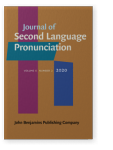Vol. 6:2 (2020) ► pp.180–208
Evaluating two ways for marking Swedish phonological length in written text
A production study
The study compares two different graphic marking systems designed to help L2 learners of Swedish notice and realize phonological length. In System A, 22 L2 learners read aloud three /VːC/ words with length marked under long vowels and three /VCː/words with dots under short vowels. Twenty-two other L2 learners read the same words marked by the other system (System B) that underlines long vowels and long consonants. As a control group, 20 native Swedish speakers read the same words without any marking. We measured and compared the temporal realizations of the six words by all the three groups. System B readers realized Swedish phonological length more closely to the way that native speakers did, compared to System A readers. These results suggest that prompting both long vowels and long consonants can be more effective than marking long and short vowels.
Article outline
- 1.Introduction
- 2.Background of the study
- 2.1Swedish word stress and quantity contrasts and their significance for intelligibility
- 2.2Word stress and quantity contrast and pronunciation teaching
- 2.3Hypothesizing the effects of the two text marking systems
- 3.Method
- 3.1Subjects
- 3.2Material
- 3.2.1Words and carrier phrases
- 3.2.2Graphical marking of words
- 3.3Data collection
- 3.4Considerations in measurements and comparisons
- 3.5Segmentation, measurement and analysis
- 4.Results
- 4.1Absolute durations
- 4.2Relative durations
- 4.2.1V/C values for /VːC/ words
- 4.2.2Sː/W values for /VːC/ words
- 4.2.3V/C values for /VCː/ words
- 4.2.4Sː/W values for /VCː/ words
- 4.2.5V/W values for the three words of /VCː/ category
- 5.Discussion
- 5.1Summary of the results: Addressing the research questions
- 5.1.1Between Systems A and B, which is more effective for helping L2 learners to realize phonological length in Swedish?
- 5.1.2Does System B induce L2 learners to pronounce phonologically short vowels too long, in reference to Swedish L1 speakers?
- 5.1.3Do the readers of System A lengthen phonologically long consonant sounds sufficiently, in reference to Swedish L1 speakers?
- 5.2Absolute and relative durations of segments
- 5.3Measures
- 5.4Pedagogical implications
- 5.5Limitations
- 5.1Summary of the results: Addressing the research questions
- 6.Conclusion
- Acknowledgements
-
References
